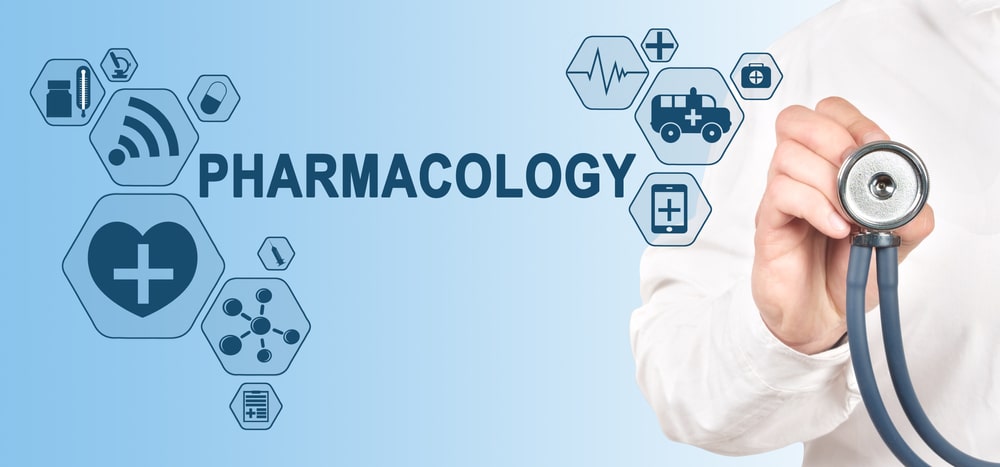Table of Contents
Pharmacology
Introduction to Pharmacology: The science of drugs is pharmacology (Greek: pharmacon—drug; logos—discourse). In a broad sense, it is concerned with the interaction of exogenously delivered chemical molecules with living systems, or any chemical substance capable of eliciting a biological reaction. It includes all elements of drug knowledge, but especially those that are pertinent to their effective and safe use in medicine.
- For thousands of years, most drugs were crude natural products of unknown composition and limited efficacy.
- The overt effects of these substances on the body were rather imprecisely known, but how they were produced was entirely unknown.
- Pharmacology as an experimental science was ushered in by Rudolf Buchheim, who founded the first institute of pharmacology in 1847 in Germany.
- In the latter part of the 19th century, Oswald Schmiedeberg, regarded as the ‘father of pharmacology’, together with his many disciples, like J Langley, T Frazer, P Ehrlich, AJ Clark, and JJ Abel, propounded some of the fundamental concepts in pharmacology.
- Since then, drugs have been purified, chemically characterized and a vast variety of highly potent and selective new drugs have been developed.
- The mechanism of action, including the molecular targets of many drugs, has been elucidated.
- This has been possible due to the prolific growth of pharmacology, which forms the backbone of rational therapeutics.

The two main divisions of pharmacology are pharmacodynamics and pharmacokinetics.
Pharmacodynamics
(Greek: dynamic—power) —What the drug does to the body.
This includes physiological and biochemical effects of drugs, as well as their mechanisms of action at the organ system/subcellular/macromolecular levels, such as adrenaline interaction with adrenoceptors, G-protein mediated stimulation of cell membrane-bound adenylyl cyclase, increased intracellular cyclic 3,5 AMP, cardiac stimulation, hepatic glycogenolysis and hyperglycemia, and so on.
Pharmacokinetics
(Greek: Kinesis—movement)—What the body does to the drug.
This refers to the drug’s movement in and alteration by the body; it includes absorption, distribution, binding/localization/storage, biotransformation, and excretion. For example, paracetamol is rapidly and almost completely absorbed orally, reaching peak blood levels in 30–60 minutes; it is 25 percent bound to plasma proteins and is widely and almost uniformly distributed in the body (volume of dialysis).
Drug
(French: Drogue—a dry herb)
It is the single active chemical entity present in a medicine that is used for diagnosis, prevention, treatment/cure of a disease.
This disease-oriented definition of drugs does not include contraceptives or the use of drugs for the improvement of health.
The WHO (1966) has given a more comprehensive definition—”Drug is any substance or product that is used or is intended to be used to modify or explore physiological systems or pathological states for the benefit of the recipient.”
The term ‘drugs’ is being also used to mean addictive/abused/illicit substances. However, this restricted and derogatory sense usage is unfortunate degradation of a time-honored term, and ‘drug’ should refer to a substance that has some therapeutic/diagnostic application.
Some other important aspects of pharmacology are:
Pharmacotherapeutics
Pharmacotherapeutics is the application of pharmacological information together with knowledge of the disease for its prevention, mitigation, or cure. It is the selection of the most appropriate drug, dosage, and duration of treatment taking into account the specific features of a patient.
Clinical pharmacology
Clinical pharmacology is the scientific study of drugs (both old and new) in man. It includes pharmacodynamic and pharmacokinetic investigation in healthy volunteers and in patients; evaluation of efficacy and safety of drugs and comparative trials with other forms of treatment.
The aim of clinical pharmacology is to generate data for optimum use of drugs and the practice of ‘evidence-based medicine’.
Chemotherapy
It is the treatment of systemic infection/malignancy with specific drugs that have selective toxicity for the infecting organism/malignant cell with no/minimal effects on the host cells.
Drugs, in general, can thus be divided into:
Pharmacodynamic agents These are designed to have pharmacodynamic effects on the recipient.
Chemotherapeutic agents These are designed to inhibit/kill invading parasite/malignant cells and have no/minimal pharmacodynamic effects on the recipient.
Pharmacy
Pharmaceutics is the art and science of compounding and dispensing drugs or preparing suitable dosage forms for the administration of drugs to man or animals. It includes collection, identification, purification, isolation, synthesis, standardization, and quality control of medicinal substances. The large-scale manufacture of drugs is called Pharmaceutics and is primarily a technological science.
Toxicology
The study of poisonings is the study of the poisonous effect of drugs and other chemicals (household, environmental pollutant, industrial, agricultural, homicidal) The same substance can be a drug or a poison, depending on the dose. It also includes the study of adverse effects of drugs, since the same substance may cause different side effects.
Make sure also check our amazing article: Presentation of exogenous antigens